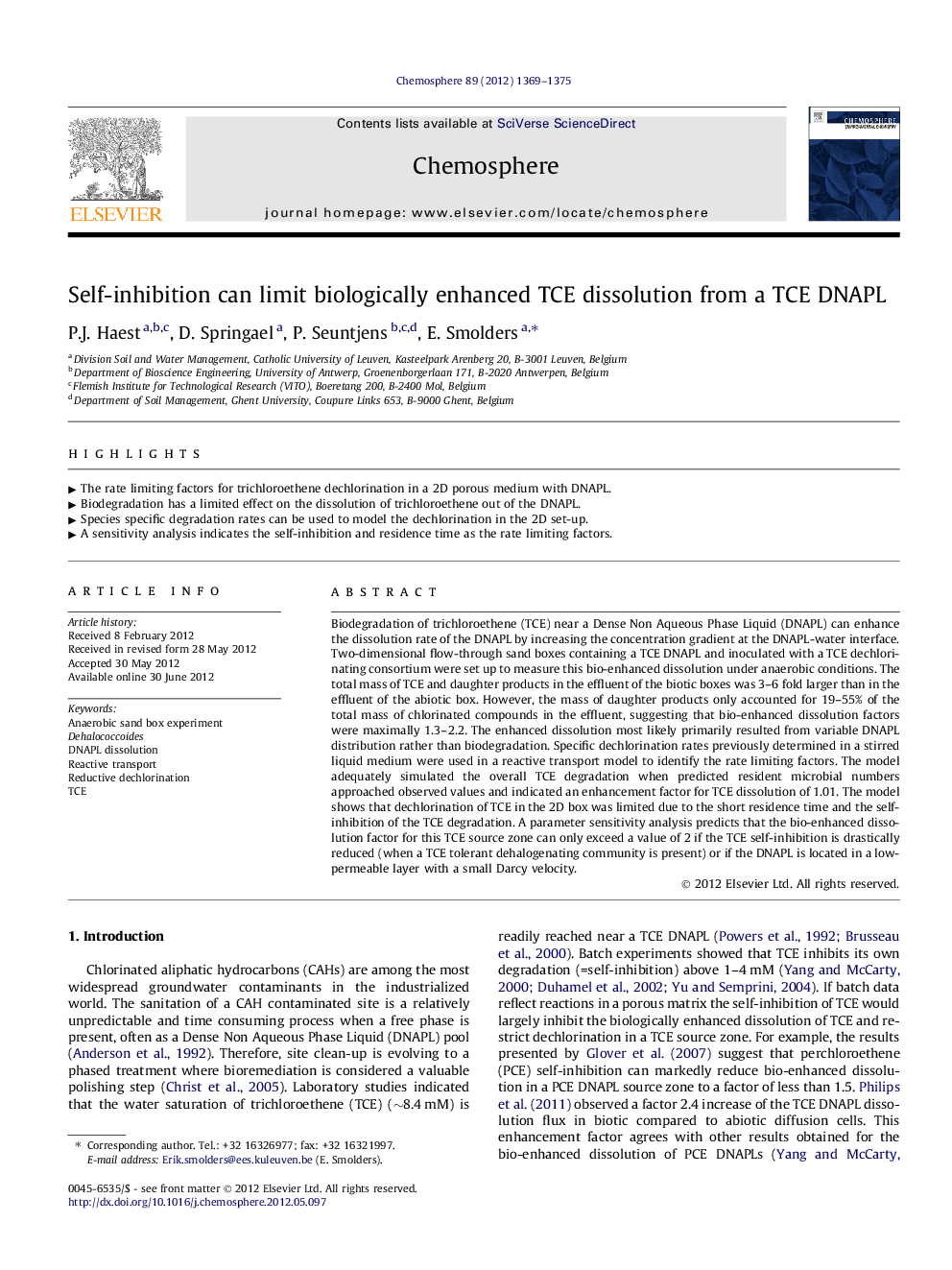| Article ID | Journal | Published Year | Pages | File Type |
|---|---|---|---|---|
| 4409653 | Chemosphere | 2012 | 7 Pages |
Biodegradation of trichloroethene (TCE) near a Dense Non Aqueous Phase Liquid (DNAPL) can enhance the dissolution rate of the DNAPL by increasing the concentration gradient at the DNAPL-water interface. Two-dimensional flow-through sand boxes containing a TCE DNAPL and inoculated with a TCE dechlorinating consortium were set up to measure this bio-enhanced dissolution under anaerobic conditions. The total mass of TCE and daughter products in the effluent of the biotic boxes was 3–6 fold larger than in the effluent of the abiotic box. However, the mass of daughter products only accounted for 19–55% of the total mass of chlorinated compounds in the effluent, suggesting that bio-enhanced dissolution factors were maximally 1.3–2.2. The enhanced dissolution most likely primarily resulted from variable DNAPL distribution rather than biodegradation. Specific dechlorination rates previously determined in a stirred liquid medium were used in a reactive transport model to identify the rate limiting factors. The model adequately simulated the overall TCE degradation when predicted resident microbial numbers approached observed values and indicated an enhancement factor for TCE dissolution of 1.01. The model shows that dechlorination of TCE in the 2D box was limited due to the short residence time and the self-inhibition of the TCE degradation. A parameter sensitivity analysis predicts that the bio-enhanced dissolution factor for this TCE source zone can only exceed a value of 2 if the TCE self-inhibition is drastically reduced (when a TCE tolerant dehalogenating community is present) or if the DNAPL is located in a low-permeable layer with a small Darcy velocity.
► The rate limiting factors for trichloroethene dechlorination in a 2D porous medium with DNAPL. ► Biodegradation has a limited effect on the dissolution of trichloroethene out of the DNAPL. ► Species specific degradation rates can be used to model the dechlorination in the 2D set-up. ► A sensitivity analysis indicates the self-inhibition and residence time as the rate limiting factors.
